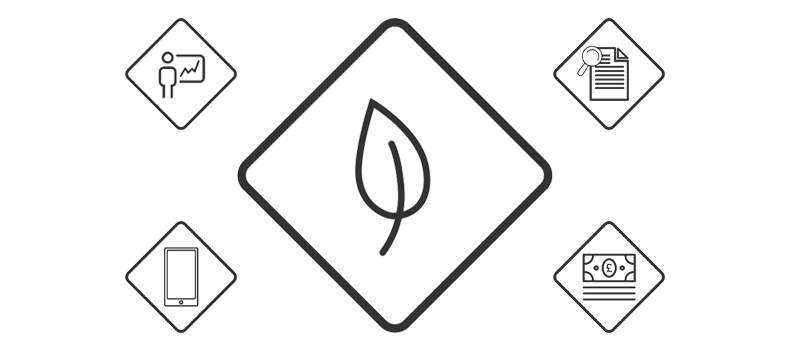Stay up to date with our latest news and insights
Supporting description on the types of content that feature in the blog.

Rightly or wrongly, printing and paper reduction are sometimes considered as a sustainability or environmental issue. As being environmentally friendly isn’t always a key driver or business objective, it means print is sometimes pushed to the side as a necessity or running a business.
However, with increasing pressures from the government and from consumers, large businesses are pushing to become more environmentally sustainable.
In some cases, it’s been about increasing transparency with CSR reporting, while in others, there is a real drive to cut out inefficient and unsustainable processes that have a negative impact on the environment.
It’s important to remember that pushing to become more sustainable doesn’t have to mean rethinking everything the company does and there are small steps that can be put in place, including looking at the processes in which printing can be reduced.

If your company or department’s main objective isn’t to think about the environment but rather to drive efficiency, increase productivity and reduce costs, that’s okay as reducing print can help when it comes to delivering these objectives.
Here are a couple of ways that reducing print can align with business objectives:
By identifying and replacing heavy paper processes, you can align the results with three objectives. Firstly, printing can be expensive and removing any unnecessary printing from business processes can save money and therefore reduces cost.
By removing the need to print documents, you can save time and increase productivity by also removing the need for an employee to go and print the document and then file it.
And finally, you can make the process more sustainable by reducing the paper usage - some of the biggest results for sustainability will come from replacing processes that involve printing one-use documents, for example, meeting agendas.
There are many processes in business that involve printing a document for one action before it’s scanned back into the system. As soon as the document is printed, it creates a ‘digital gap’, in which the document can’t be tracked.
This often happens when someone prints a document to sign or in some cases annotate before adding it back into the digital process. It can cause a lot of issues, especially if the printed document then gets lost, and more often than not, the reason for printing can easily be replaced by a digital alternative.
By removing the step of printing the document, your company can again benefit from the reduced cost of printing and by keeping the whole process digital, there is a better audit trail in place, not to mention the fact that it’s more efficient, saves paper and therefore has an environmental impact.
With the idea of reducing paper in mind, you don’t have to start with changing everything and some of the biggest changes can come from making your employees more aware of what they’re printing and how they can reduce their own printing.
The print awareness tool uses a simple graphical interface to show users their print history, key stats and how they compare with their peer group, their department and the entire organisation with the aim to encourage users to reduce and change their printing behaviour.
Supporting description on the types of content that feature in the blog.

20-09-2024
Digital document management tools offer a range of compelling benefits for businesses, including a PDF editor, a file converter and a form generator. You can also integrate with digital signatures qui...

20-09-2024
When choosing a SaaS software to deal with your company’s PDF documents and enable forms to be digitally sent and signed, you’ll want a product that’s user-friendly and easy to use. With Tungsten’s Po...

11-07-2024
Belkin is a global technology company that provides high-quality electronics products, from wireless chargers to power banks. Their people-centric approach and best-in-class functionality have positio...